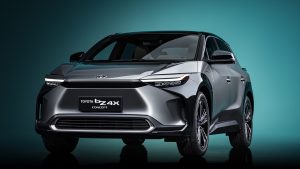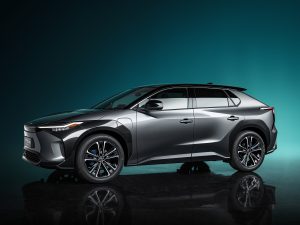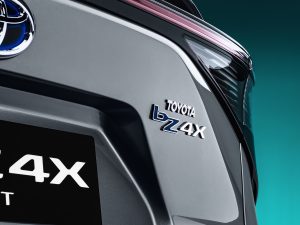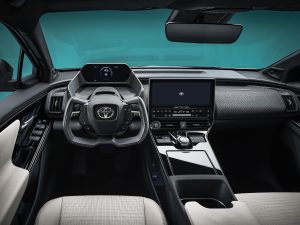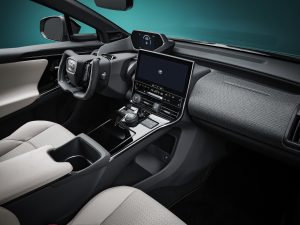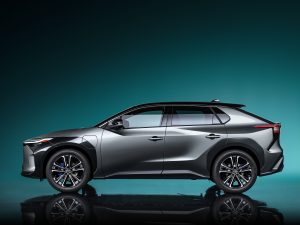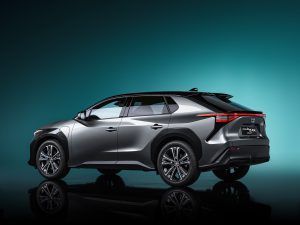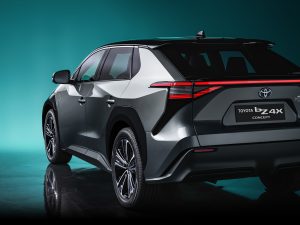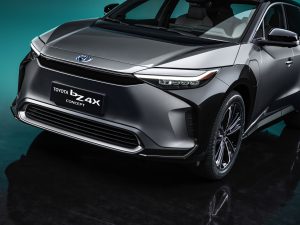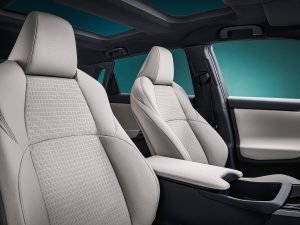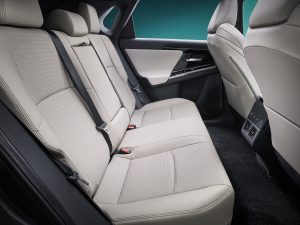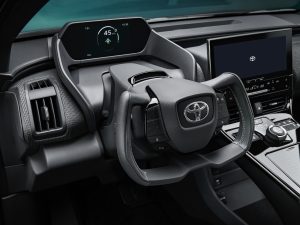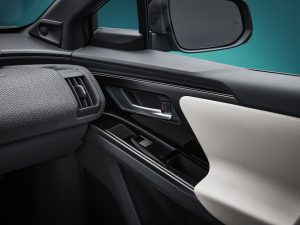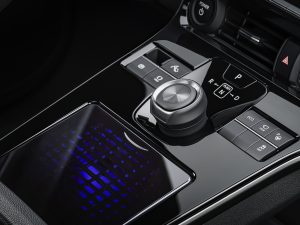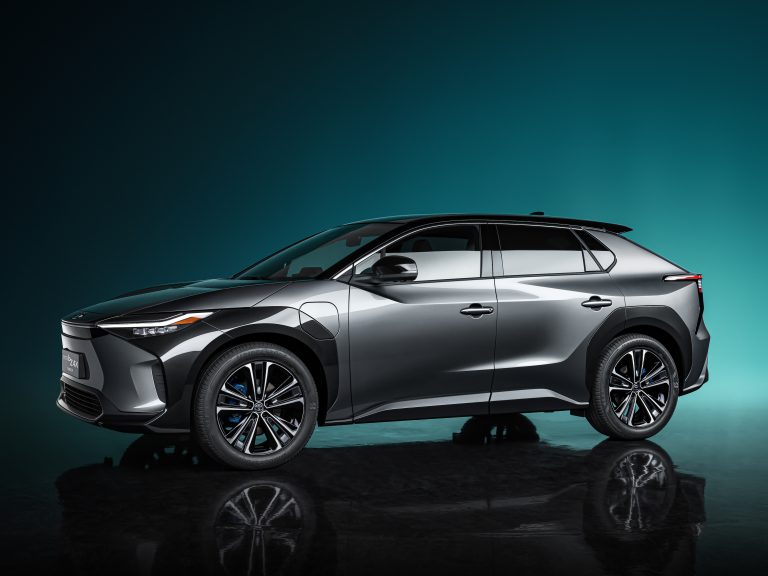World Premiere of the Toyota bZ4X Concept
- Toyota concept previews a new family of battery electric vehicles
- Toyota bZ – “beyond Zero” – highlights Toyota’s commitment to carbon neutrality, and beyond
- Constructed on an all-new e-TNGA platform, optimised for electric vehicles
- Developed in partnership with Subaru corporation
- Concept draws on the rich off-road heritage and expertise of Toyota and Subaru to deliver high all-wheel drive capability
- Debut of an advanced steer-by-wire system and solar charging capability
- e-TNGA platform enables adoption of a new “dynamism and utility” exterior design theme
- Cabin space similar to a large D-segment model with a panoramic view for the driver
Toyota, today, presents a concept version of the forthcoming Toyota bZ4X at the Shanghai Motor Show, previewing the first in a series of zero-emission battery electric vehicles (BEVs).
The Toyota bZ4X, a medium-size SUV with all-wheel drive, is integral to Toyota’s transition from a pure car company to a business dedicated to delivering better mobility for all.
The “bZ” is an abbreviation of “beyond Zero”, reinforcing Toyota’s commitment not only to achieving zero carbon emissions and carbon neutrality, but also going beyond to realise new benefits for the environment, for individuals and for society as a whole.
The new Toyota bZ4X Concept has been developed by Toyota Motor Corporation (Toyota) in partnership with Subaru Corporation (Subaru), drawing on the specific skills and experience of each company. Sales of the production version are expected to commence around the middle of 2022.
Introducing the Toyota bZ4X Concept
The Toyota bZ4X is more than just a means of transport. It is also a comfortable and connected space where people can enjoy spending time together on a journey.
Chief Engineer Koji Toyoshima explains: “Our target customer is someone who places importance on time spent together with family and friends. When they want to enjoy such times, Toyota bZ4X Concept can serve as a hub for them.”
Exterior design that combines dynamism and utility
The Toyota bZ4X Concept’s exterior design anticipates people’s high expectations of an electric vehicle driving experience that requires no compromises. Its overall form marries dynamism and utility: there is a high driving position characteristic of SUVs but the car still appears planted on the road. The bodywork presents sensuous surfaces, combined with precise and high-tech styling.
The front of the car – an instant point of recognition for any vehicle – dispenses with the familiar grille and instead features an arrangement of sensors, lights and aero elements in a distinctive “hammerhead” form, generating a new attitude and road presence.
Spacious cabin and “drive module”
The Toyota bZ4X Concept is built on the new e-TNGA modular platform, developed specifically for electric vehicles. A long wheelbase and short overhangs help create a notably spacious and open cabin. In fact, rear leg room is similar to that of a large D-segment model.
The front cabin is designed around a “drive module” which gives the driver a sense of direct connection to the road and to important information. The low-set instrument panel opens up panoramic visibility and emphasises the sense of space. Controls are grouped around the centre console, designed for easy recognition and operation. The digital driver’s instrument display is positioned above the steering wheel, so only minimal eye movement is required to register information.
Battery management a key to optimising driving range
The development programme has reaped the benefits of more than 20 years of Toyota’s leadership in vehicle electrification and the company’s brand-defining quality, durability and reliability. This has ensured the electric powertrain – motor, control unit and battery management system – deliver class-leading efficiency and a very competitive driving range.
The car’s environmental profile is further strengthened by an on-board solar charging system, which enhances the distance that can be covered. Thanks to Toyota’s extensive experience in developing battery technology for its hybrid electric and plug-in hybrid electric models, the larger, more powerful battery required for Toyota bZ4X Concept has been engineered for reliable, lasting performance, maintaining the car’s driving range, even in cold climates.
An authentic SUV with high all-wheel drive capability
The all-wheel drive system, delivered by electric motors on the front and rear axles, has been developed together with Subaru. The rich heritage and deep expertise of both Toyota and Subaru have been combined to deliver a best-in-class all-wheel drive capability that sets the Toyota bZ4X Concept apart in its segment. The system gives genuine off-road capability that also provides extra security and peace of mind for drivers in all on-road conditions.
Advanced steer-by-wire system
Toyota bZ4X Concept will be available with a world-first* combination of a steering yoke and a steer-by-wire system. This technology gives the driver greater control, removing interference from rough road surfaces and braking, and thus more precise response in line with the vehicle’s speed and steering angle.
Steer-by-wire also dispenses with the traditional, circular steering wheel, replacing it with a different shape “yoke” control, so the driver no longer has to move their hands around the wheel as they make a turn, adding to the car’s fun-to-drive quality.
* For a mass-production model
Toyota bZ: the ethos of a series of new Toyota battery electric vehicles
The Toyota bZ4X Concept is the first model to feature Toyota’s new bZ – beyond Zero – naming convention. By 2025, Toyota aims to introduce 15 battery electric vehicles, including seven Toyota bZ models.
This new series of battery electric vehicles will allow people to change from their current vehicle with no inconvenience, while realising all the benefits a fully electric car can offer. This is achieved through human-focused development and by providing mobility that’s tailored to people’s real lives and experiences. Chief Engineer Toyoshima explains: “This is not just about contributing to the environment by being a zero-emission vehicle but giving value ‘beyond Zero’ emissions by making driving easier and more fun.”
Toyota bZ models will also help achieve the goal of carbon neutrality. This refers to approaches and initiatives aimed at neutralising CO2 emissions from the entire vehicle lifecycle, including manufacturing, distribution, use, recycling and final disposal.
Toyota defines four aspects of “beyond Zero,” with the first and most important being “You and the Environment,” considering not just the energy the car uses to move, but also how it can make use of regenerative or renewable energy, such as solar power.
The second aspect is “You and Your Car,” by which a battery electric vehicle, designed on a dedicated platform, makes use of the latest technological features and provides excellent connectivity to provide safety, peace of mind and an enjoyable driving experience.
Thirdly, “You and Others” guides the creation of BEVs that have the spaciousness and quiet environment that will inspire people to interact and share experiences together.
Lastly, “You and Society” considers the wider impact on society and making the world a better place for everyone to live.
Building on Toyota’s electrification leadership
The new Toyota bZ4X Concept is the latest milestone in Toyota’s journey to achieve zero emissions that began more than 20 years ago with the launch of the original Prius, the world’s first mass-production hybrid electric car. Since that time, Toyota has consistently pushed the boundaries of vehicle electrification, achieving ever greater efficiency from its hybrid technology and realising new opportunities with the development of plug-in hybrid electric and hydrogen fuel cell electric vehicles. To date, Toyota has sold more than 17 million electrified vehicles, saving around 140 million tonnes of CO2. Between 2010 and 2019, electrified technology has helped Toyota reduce its overall global vehicle CO2 emissions by approximately 22 per cent.
Toyota “bZ” also signals how Toyota is looking beyond zero emissions when it comes to future mobility. With its focus on “Delivering Ever-Better Mobility for All,” beyond Zero also encompasses Toyota’s desire to create products and services that enhance the pleasure of driving, elevate the connected experience, keep all road users safe and protected and ultimately create better societies around the world.
To accomplish this, Toyota has pursued a wide choice of electrified technologies, to suit the demands of different markets and types of vehicle use – HEVs, PHEVs, FCEVs and BEVs. In addition, developing hydrogen as a plentiful source of clean energy adds a further dimension, with fuel cell technology applicable to many different forms of transport – not just FCEV cars, but also heavy trucks, trains and shipping – and for use in stationary and mobile electricity generators.
Electrified vehicle portfolio expansion
By 2025, Toyota will offer more than 70 electrified vehicles in its global portfolio, including at least 15 battery electric vehicles.
In Europe, this will translate into a powertrain mix that is more than 70 per cent hybrid by 2025; more than 10 per cent plug-in hybrids and more than 10 per cent zero-emission models – both battery electric and fuel cell electric vehicles.
Toyota’s contribution to Sustainable Development Goals and determination to achieve carbon neutrality
In 2018, Toyota announced its intention to transform itself from an automotive business into a mobility company.
On the premise that everyone lives on the same planet, Toyota takes action from the perspective of “home planet” above and beyond the concepts of “home town” and “home country” that have for so long been the business territories of the automotive industry.
The current working generation is responsible for bequeathing the planet to the next generation as a place where people can live with peace of mind. This informs Toyota’s human-centred philosophy that technology should contribute positively to people’s health and happiness.
Using the strength it has cultivated through monozukuri (creating or manufacturing) and by incorporating further technological innovations that expand the possibilities of mobility, Toyota seeks to provide services that make the freedom of mobility available to all.
Toyota also aims to contribute through its businesses to realising Sustainable Development Goals (SDGs). Among the 17 SDGs set out by the United Nations, reducing CO2 emissions is a global issue; to achieve this, it is vital electrification is implemented on a global scale.
Today, countries around the world are declaring their timelines towards achieving carbon neutrality. In Europe, for example, the European Union is targeting carbon neutrality by 2050.
Integrated activities are required to realise carbon neutrality in the automotive industry; those relating to energy policies promoting renewable energy and recharging infrastructure, and industrial policies, such as subsidies, support for suppliers and battery recycling systems. The industry also needs to work with different stakeholders, such as governments and business organisations.
As Toyota expands its business globally, it will develop its electrification strategy for reducing lifecycle CO2 emissions through consultations with national governments.
Toyota will also strive to provide full disclosure of information so that we can seek more understanding from our stakeholders, such as conducting review and information disclosure by the end of the year, to ensure that liaison activities meet the long-term goal of the Paris Agreement on climate change.
ENDS

